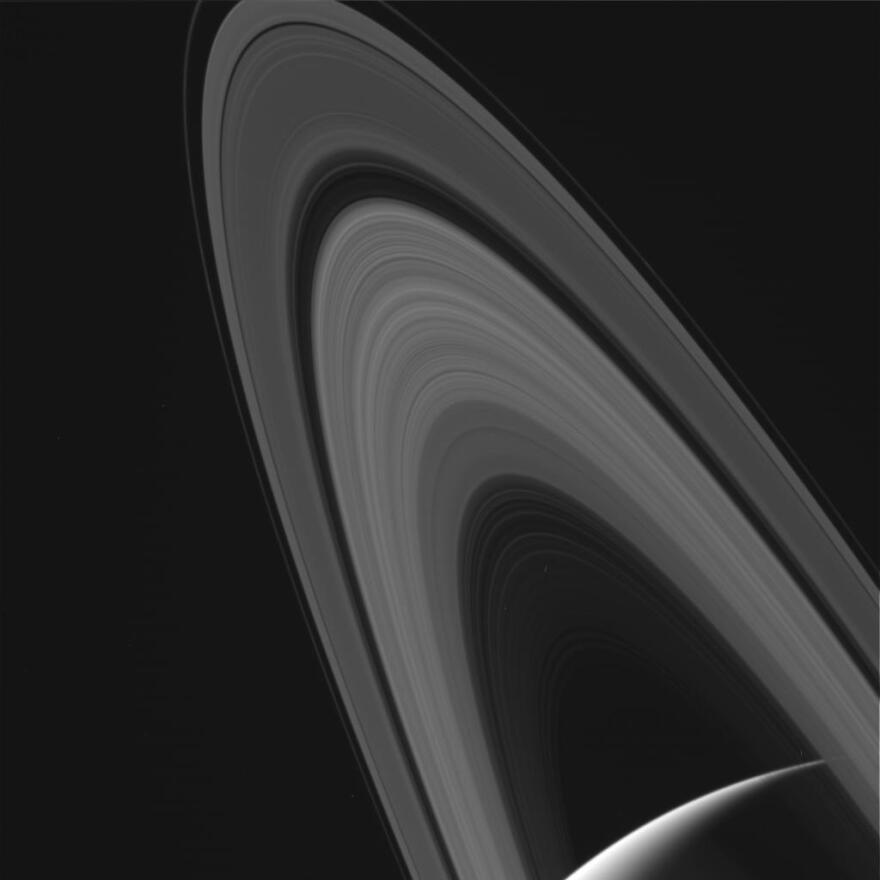With our free press under threat and federal funding for public media gone, your support matters more than ever. Help keep the LAist newsroom strong, become a monthly member or increase your support today.
Cassini turns dangerous orbit to unlock Saturn's rings

During Cassini's most recent orbit around Saturn on June 4, she passed closely by the planet's innermost ring, a dangerous move. There was concern that she could collide with ring particles, which could potentially destroy her delicate equipment. So, to defend herself, Cassini did about a 90 degree turn, using her High Gain Antennae as a shield to protect herself from potential impacts.
It was a calculated move by a team of people at the Jet Propoulsion Laboratory in Pasadena. The goal: to learn more about the legendary rings around the planet.
Galileo first spotted Saturn in 1610, but it wasn’t until later in the century that Dutch astronomer Christian Huygens was able to figure out that there was a giant ring around the planet. Italian astronomer Giovanni Cassini determined that it wasn't just one big solid ring, and in subsequent years, others figured out that there were many concentric rings, made up of individual particles that they were viewing through their telescopes.
JPL's Voyager program in the 1980s gave us some of the clearest pictures of the rings. And in 1997, Cassini-Huygens was launched and taking seven years to arrive at Saturn.
According to Linda Spilker, a project scientist on the Cassini project and a ring expert, the spacecraft helped them understand plenty about the rings during its 13 years orbiting the planet.
During that time, we learned that in some places the rings are only 10 meters (33 feet) thick and that they're mostly made of water ice. Some ring particles are smaller than a tiny pebble and others are several miles big.
But plenty of questions remain. Scientists suspect that the rings might be different ages, but they're unsure of how old they actually are. There are theories, but it's unclear where the rings came from and why we don't see ring's like Saturn's around Jupiter as well. And It's a puzzle as to what gives the rings their color.
High resolution scans of the rings, examinations of ring particles to determine their composition and measurements of their mass are all part of Cassini's Grand Finale , the final 22 orbits before the spacecraft drifts in to Saturn's atmosphere and disintegrates on September 15.
But even after its mission ends, scientists around the world will be sifting through Cassini's data for years to come.








